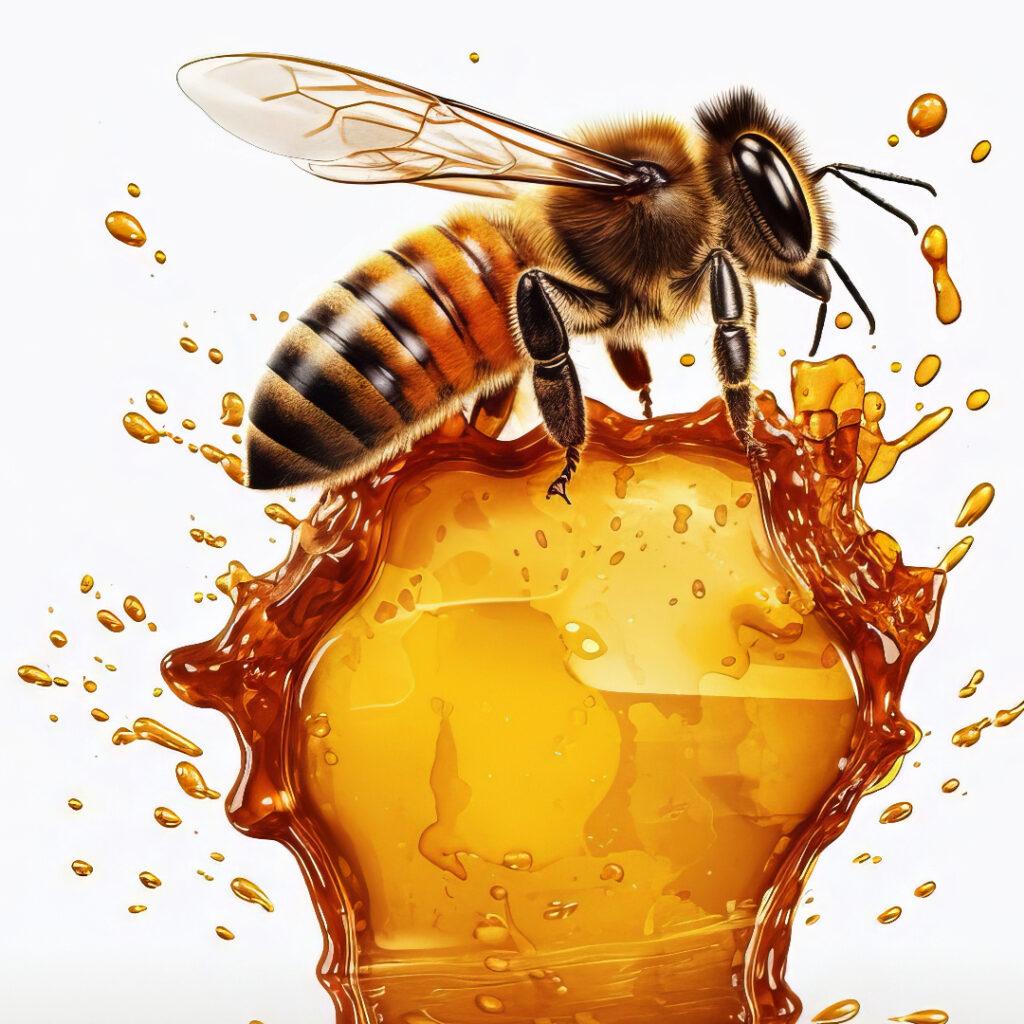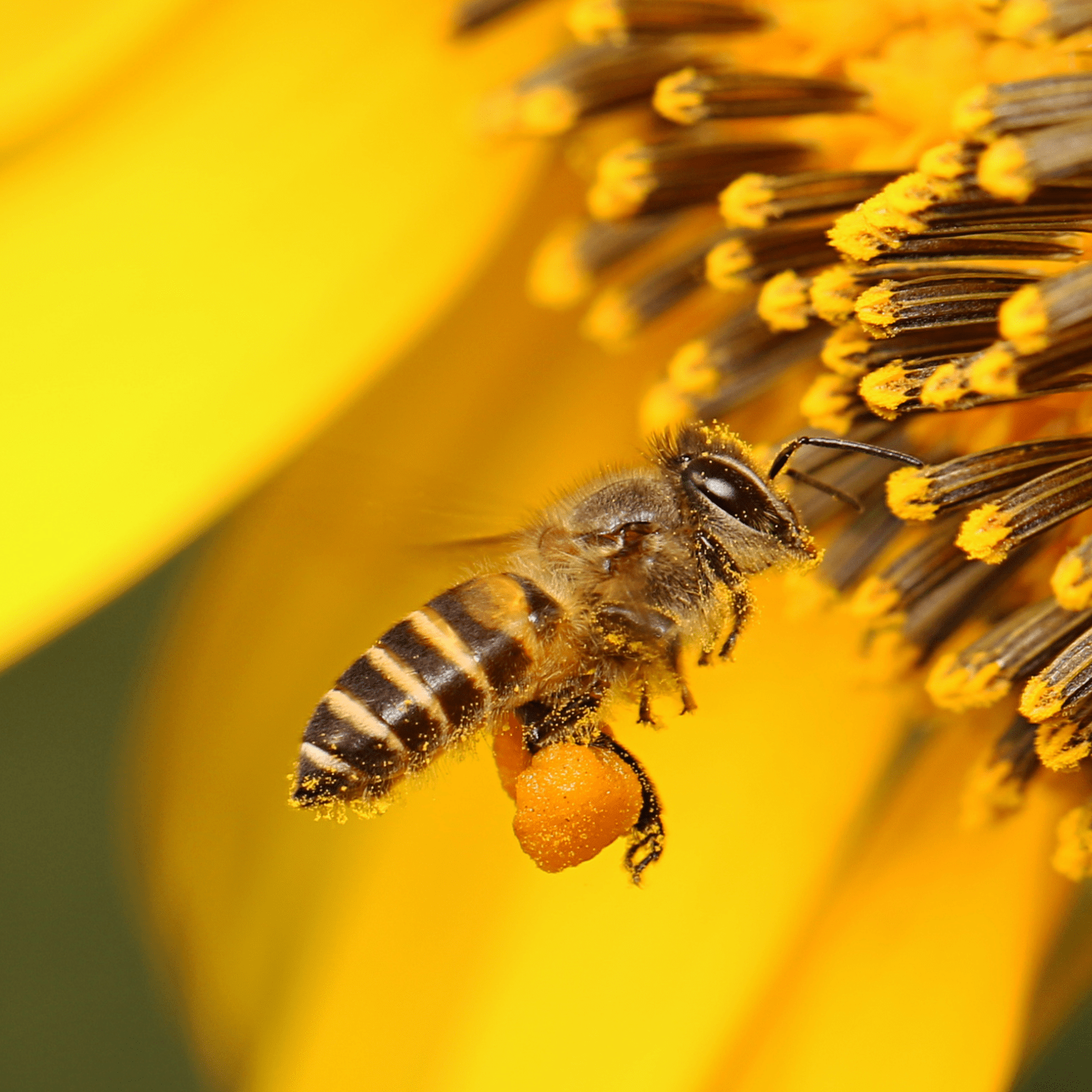The next time you taste honey, remember all the tireless work and ingenuity of the bees involved in its creation.
Honey is one of the oldest natural wonders. The testimony of theingenuity of bees but also an extremely varied food in taste and type. Nutritious and above all rich in vitamins, minerals and antioxidants. But how was it born and what is it production process which makes it great for us and equally valuable for bees, plants and nature itself?
How honey is made: the commitment of bees
Honey is the result of an intricate ballet of bees that collect nectar from flowers and slowly transform it into food. The process begins when the worker bee heads to the flowers to collect the nectar, a sugar solution produced by floral glands. The bee sucks the nectar of the flowers using its tongue which is shaped like a proboscis and stores it in a sort of stomach also called the "nectar sac".
Once full, the bee returns to the hive. During the journey, the nectar undergoes a series of transformations. Enzymes present in the bee's saliva begin to break down the complex sugars in the nectar into simpler sugars such as glucose and fructose. This process which we can call predigestion is fundamental for the subsequent one maturation of honey.
Once in the hive, the nectar passes to the forager bee who stores it in wax cells where after a while it becomes honey.
The nectar contained in the cells has a high percentage of water. To become honey, the water must be reduced below 20%. Worker bees begin to ventilate the cells, creating air currents to encourage the evaporation of water. This process can take several days and sometimes weeks depending on the type of honey and environmental conditions.
When the honey has reached the right consistency and the right percentage of humidity, the foraging bees seal the cells with a layer of wax. This sealing protects the food from external agents and always keeps it fresh. Only at this point does the beekeeper collect by gently breaking the seals.
The entire honey production process is an amazing example of the collaboration And great precision of the bees.
Nutritional properties
Honey is rich in nutrients, vitamins, minerals and antioxidants. Thanks to its antibacterial and anti-inflammatory properties, it has been used for centuries as a natural remedy for coughs and sore throats. Its ability to accelerate wound healing and soothe the skin also makes it a key ingredient in many skin care products. Honey is not just sugars, it contains vitamin C, riboflavin or vitamin B2, niacin or vitamin B3 and vitamin B6. Furthermore, it is rich in minerals such as calcium, potassium, iron and magnesium. This combination of nutrients gives this food a significant nutritional value, making it abeneficial addition to the diet.
Therapeutic properties
The therapeutic properties of this food, as we have said, have been recognized since ancient times. Many scientific studies have demonstrated its effectiveness in reducing throat irritation and improving congestion. Furthermore, it accelerates wound healing. This is due to his antimicrobial properties and the percentage of water it contains that can help keep a wound clean and facilitate healing. Not only is it a natural remedy, but it is used in cosmetics precisely for its hydrating and soothing properties on the skin. Face and hair masks, honey-based creams and lotions they are excellent for nourishing and reducing skin inflammation.
Furthermore, raw honey, i.e. unpasteurised, retains most of its beneficial properties, including enzymes, antioxidants and antibacterial substances.
These nutritional and therapeutic properties make it a true gift of nature, which goes beyond its simple sweet flavor. Its potential to improve human health and well-being makes it a valuable food and remedy recognized throughout the world.
The diversity of honey
The world of honey is surprisingly diversified, with types of honey that vary based on the source of nectar, location and climatic conditions. Each variety of honey has its own flavor and unique properties. This diversity is probably one of the most fascinating characteristics of honey. Here are some types:
The Acacia's honey It has a light color and mild flavor and is loved for its light flavor and ability to remain liquid for a long time.
The Manuka honey it is native to New Zealand and Australia and is famous for its antibacterial properties. This honey comes from the flowers of manuka, a medicinal plant and contains methylglyoxal (MGO) an organic compound that acts as a natural antibacterial and antiseptic.
The Chestnut Honey it is dark and has a robust and sometimes slightly bitter flavor. It is perfect to accompany mature cheeses.
The Lavender honey It has a distinctive and aromatic flavor typical of lavender flowers. It is highly appreciated for its scent and delicate flavor and is an ideal complement to sweets and scented herbal teas.
The Dandelion honey It has a surprising and unique flavour, often with slightly bitter notes. It is appreciated for its originality and is well suited as a condiment for savory dishes and cheeses.
The Wild Flower Honey it is one of the most common and versatile varieties of honey. It comes from the nectar of several flowers and is thus able to create a complex flavor that can vary considerably based on the geographical area. It is appreciated for its rich flavor and its versatility in the kitchen.
There are many other types, each with its own unique characteristics. Its diversity is not only a feast for the palate, but also testifies to the wonders of nature and the importance of bees as pollinators of flowers around the world.
Recommended use
Rich in health benefits and nutrients, honey is also a food used for sweetening. Contains natural sugars, above all, glucose and fructose. Compared to sugar it has many advantages as it also contains nutrients and antioxidants. A spoonful contains approximately 64 calories but being sweet by nature allows you to sweeten a food or drink with small quantities. Regarding daily use, the recommended amount may vary based on age, gender, physical activity and individual caloric needs.
Honey and the connection with nature
Honey is not only a food, but also a precious bridge between humanity and nature. Its production process, which involves bees and a variety of flowers, is a stunning testament to the beauty and complexity of the natural world.
Honey production is an example of ecological cooperation between bees and plants. Bees collect nectar from flowers, playing a crucial role in pollination, which allows plants to reproduce. Not only this process promotes crop growth, but also contributes to biodiversity and the general health of ecosystems.
The variety of honey types is also a reflection of the different plants the nectar comes from. Each variety captures the unique scent and taste of the flowers from which it was harvested.
Honey reminds us that we are interconnected with nature. Through its flavor and its origin, it invites us to consider the natural world with a new eye, to respect and preserve it. Each spoonful is a tasting of nature's wonder. Honey is a priceless testimony to the profound connection between man and nature, a daily reminder of the love for this wonderful planet.



